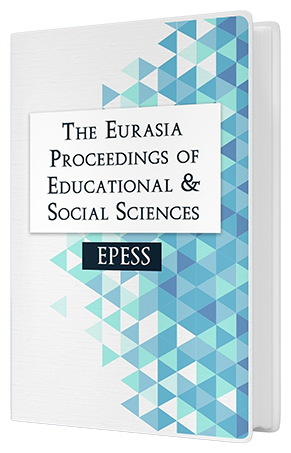Examination of the Sixth-Grade Students’ Performances in Graphical Languages
Keywords:
Graphical Languages, Sixth-grade students’ performancesAbstract
Graphical languages are helpful for students as they facilitate the understanding of the given data. Understanding these graphical languages is also important as students encounter tasks containing graphics when compared to the tasks in the past (Diezmann & Lowrie, 2008). The current study aims to investigate whether sixth-grade students’ graphical language performances vary significantly considering gender. It was also investigated whether there is a significant correlation between the sixth-grade students’ performances among the six components of the graphical language. The participants were 97 sixth-grade students in an elementary school in Ankara, Turkey. To examine students’ performances in graphical languages, a graphical languages test was adapted from Mackinlay’s (1999) model of graphical languages. The results of the study showed that total scores of the sixth-grade students’ graphical performances did not vary significantly considering gender. However, when the students’ scores were examined for each component of the graphical language test individually, it was found that the students’ scores in the Axis and Miscellaneous components varied significantly. This difference in the Axis component was found to be in favor of the girls, while it was in favor of the boys in the Miscellaneous component. Furthermore, there were significant correlations among the sixth-grade students’ performances in graphical languages.Downloads
Published
Issue
Section
License
Copyright (c) 2019 The Eurasia Proceedings of Educational and Social Sciences

This work is licensed under a Creative Commons Attribution-NonCommercial-ShareAlike 4.0 International License.
The articles may be used for research, teaching, and private study purposes. Any substantial or systematic reproduction, redistribution, reselling, loan, sub-licensing, systematic supply, or distribution in any form to anyone is expressly forbidden. Authors alone are responsible for the contents of their articles. The journal owns the copyright of the articles. The publisher shall not be liable for any loss, actions, claims, proceedings, demand, or costs or damages whatsoever or howsoever caused arising directly or indirectly in connection with or arising out of the use of the research material. All authors are requested to disclose any actual or potential conflict of interest including any financial, personal or other relationships with other people or organizations regarding the submitted work.




